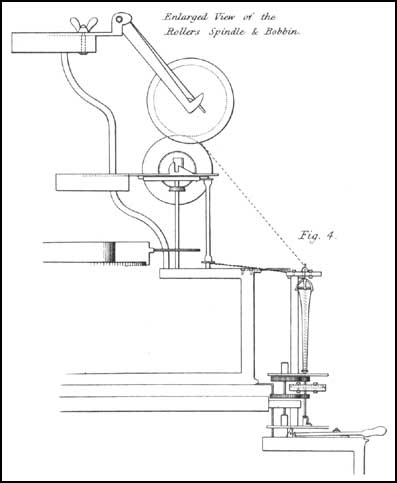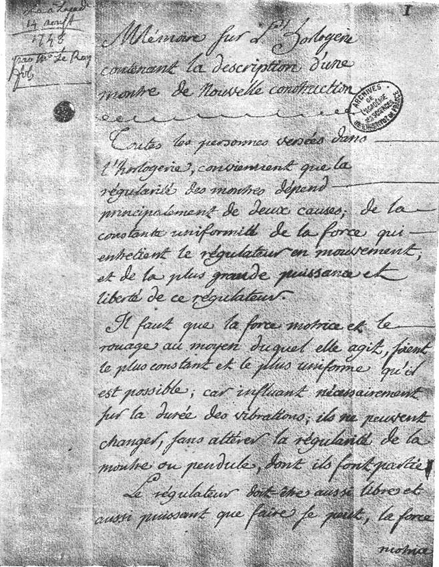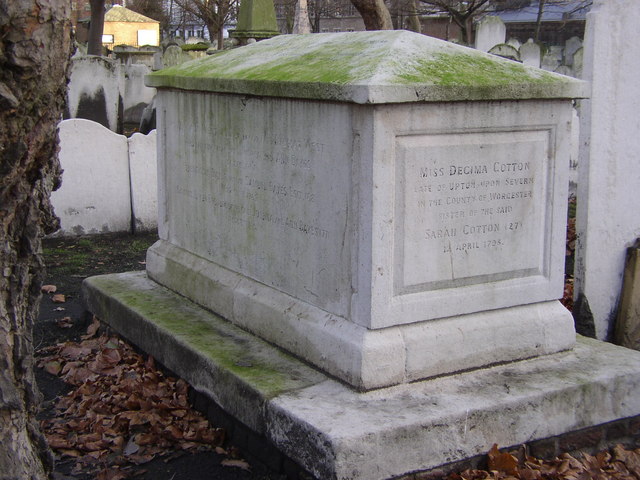|
1748 In Science
The year 1748 in science and technology involved some significant events. Archaeology * Rediscovery of the ruins of Pompeii. Chemistry * Thomas Frye of the Bow porcelain factory in London produces bone china. Earth sciences * Publication in Amsterdam of the Neptunian theory of French diplomat Benoît de Maillet (died 1738) in ''Telliamed, ou entretiens d’un philosophe indien avec un missionnaire françois, sur la diminution de la mer, la formation de la terre, l’origine de l’homme...'' as edited by Abbé Jean Baptiste de Mascrier. Mathematics * Leonhard Euler publishes '' Introductio in analysin infinitorum'', an introduction to pure analytical mathematics, in Berlin. He calculates the mathematical constant '' e'' to 23 digits and presents Euler's formula. Euler's fifth paper on nautical topics, E137, is also written in this year but not published until 1750. * Maria Agnesi publishes ''Instituzioni analitiche ad uso della gioventù italiana'' in Milan, "regarded as the ... [...More Info...] [...Related Items...] OR: [Wikipedia] [Google] [Baidu] |
Science
Science is a systematic endeavor that builds and organizes knowledge in the form of testable explanations and predictions about the universe. Science may be as old as the human species, and some of the earliest archeological evidence for scientific reasoning is tens of thousands of years old. The earliest written records in the history of science come from Ancient Egypt and Mesopotamia in around 3000 to 1200 BCE. Their contributions to mathematics, astronomy, and medicine entered and shaped Greek natural philosophy of classical antiquity, whereby formal attempts were made to provide explanations of events in the physical world based on natural causes. After the fall of the Western Roman Empire, knowledge of Greek conceptions of the world deteriorated in Western Europe during the early centuries (400 to 1000 CE) of the Middle Ages, but was preserved in the Muslim world during the Islamic Golden Age and later by the efforts of Byzantine Greek scholars who brought Greek ... [...More Info...] [...Related Items...] OR: [Wikipedia] [Google] [Baidu] |
Euler's Formula
Euler's formula, named after Leonhard Euler, is a mathematical formula in complex analysis that establishes the fundamental relationship between the trigonometric functions and the complex exponential function. Euler's formula states that for any real number : e^ = \cos x + i\sin x, where is the base of the natural logarithm, is the imaginary unit, and and are the trigonometric functions cosine and sine respectively. This complex exponential function is sometimes denoted ("cosine plus i sine"). The formula is still valid if is a complex number, and so some authors refer to the more general complex version as Euler's formula. Euler's formula is ubiquitous in mathematics, physics, and engineering. The physicist Richard Feynman called the equation "our jewel" and "the most remarkable formula in mathematics". When , Euler's formula may be rewritten as , which is known as Euler's identity. History In 1714, the English mathematician Roger Cotes presented a geometrical ar ... [...More Info...] [...Related Items...] OR: [Wikipedia] [Google] [Baidu] |
Jorge Juan Y Santacilia
Jorge Juan y Santacilia (Novelda, Alicante, 5 January 1713 – Madrid, 21 June 1773) was a Spanish mathematician, scientist, naval officer, and mariner. He determined that the Earth is not perfectly spherical but is oblate, i.e. flattened at the poles. Juan also successfully measured the heights of the mountains of the Andes using a barometer. Family and education Jorge Juan was born on the estate ''El Fondonet'', the property of his grandfather don Cipriano Juan Vergara in Novelda, Alicante, Spain. He was baptised in the Church at Monforte del Cid. Juan was born of two distinguished families: his father was don Bernardo Juan y Canicia who came from the branch of the Counts of Peñalba, and his mother was doña Violante Santacilia y Soler de Cornellá, who came from prominent land-owning family in Elche. Both of his parents were widowed and remarried. They lived in their house on the Plaza del Mar in Alicante and only vacationed in Novelda. His father died when Juan was only t ... [...More Info...] [...Related Items...] OR: [Wikipedia] [Google] [Baidu] |
Madrid
Madrid ( , ) is the capital and most populous city of Spain. The city has almost 3.4 million inhabitants and a metropolitan area population of approximately 6.7 million. It is the second-largest city in the European Union (EU), and its monocentric metropolitan area is the third-largest in the EU.United Nations Department of Economic and Social AffairWorld Urbanization Prospects (2007 revision), (United Nations, 2008), Table A.12. Data for 2007. The municipality covers geographical area. Madrid lies on the River Manzanares in the central part of the Iberian Peninsula. Capital city of both Spain (almost without interruption since 1561) and the surrounding autonomous community of Madrid (since 1983), it is also the political, economic and cultural centre of the country. The city is situated on an elevated plain about from the closest seaside location. The climate of Madrid features hot summers and cool winters. The Madrid urban agglomeration has the second-large ... [...More Info...] [...Related Items...] OR: [Wikipedia] [Google] [Baidu] |
Lewis Paul
Lewis Paul (died 1759) was the original inventor of roller spinning, the basis of the water frame for spinning cotton in a cotton mill. Life and work Lewis Paul was of Huguenot descent. His father was physician to Lord Shaftesbury. He may have begun work on designing a spinning machine for cotton as early as 1729, but probably did not make practical progress until after 1732 when he met John Wyatt, a carpenter then working in Birmingham for a gun barrel forger. Wyatt had designed a machine, probably for cutting files, in which Paul took an interest. Roller spinning was certainly Paul's idea, and Wyatt built a machine (or model) for him. Paul obtained a patent for this on 24 June 1738. He then set about trying to license his machine, though some licences were granted in satisfaction of debts. In 1741, he set up a machine powered by two asses in the Upper Priory in Birmingham, near his house in Old Square. Mills using the roller spinning patent Edward Cave, a publisher, obta ... [...More Info...] [...Related Items...] OR: [Wikipedia] [Google] [Baidu] |
Watchmaking
A watchmaker is an artisan who makes and repairs watches. Since a majority of watches are now factory-made, most modern watchmakers only repair watches. However, originally they were master craftsmen who built watches, including all their parts, by hand. Modern watchmakers, when required to repair older watches, for which replacement parts may not be available, must have fabrication skills, and can typically manufacture replacements for many of the parts found in a watch. The term clockmaker refers to an equivalent occupation specializing in clocks. Most practising professional watchmakers service current or recent production watches. They seldom fabricate replacement parts. Instead they obtain and fit factory spare parts applicable to the watch brand being serviced. The majority of modern watchmakers, particularly in Switzerland and other countries in Europe, work directly for the watchmaking industry and may have completed a formal watchmaking degree at a technical school. ... [...More Info...] [...Related Items...] OR: [Wikipedia] [Google] [Baidu] |
Escapement
An escapement is a mechanical linkage in mechanical watches and clocks that gives impulses to the timekeeping element and periodically releases the gear train to move forward, advancing the clock's hands. The impulse action transfers energy to the clock's timekeeping element (usually a pendulum or balance wheel) to replace the energy lost to friction during its cycle and keep the timekeeper oscillating. The escapement is driven by force from a coiled spring or a suspended weight, transmitted through the timepiece's gear train. Each swing of the pendulum or balance wheel releases a tooth of the escapement's ''escape wheel'', allowing the clock's gear train to advance or "escape" by a fixed amount. This regular periodic advancement moves the clock's hands forward at a steady rate. At the same time, the tooth gives the timekeeping element a push, before another tooth catches on the escapement's pallet, returning the escapement to its "locked" state. The sudden stopping of the esc ... [...More Info...] [...Related Items...] OR: [Wikipedia] [Google] [Baidu] |
Pierre Le Roy
Pierre Le Roy (1717–1785) was a French clockmaker. He was the inventor of the detent escapement, the temperature-compensated balance and the isochronous balance spring. His developments are considered as the foundation of the modern precision clock. Le Roy was born in Paris, eldest son of Julien Le Roy, a clockmaker to Louis XV who had worked with Henry Sully, in which place Pierre Le Roy succeeded his father. He had three brothers: Jean-Baptiste Le Roy (1720-1800), a physicist; Julien-David Le Roy (1724–1803), an architect; and Charles Le Roy (1726–1779), a physician and encyclopédiste. Invention of the detent escapement In 1748, he invented a pivoted detent type of escapement,''Britten's Watch & Clock Makers' Handbook Dictionary & Guide Fifteenth Edition'' p.12/ref> or detached escapement, which makes him the inventor of the Escapement#Detent escapement, detent escapement: "The invention of the detached escapement belongs to P. Le Roy". This should not be conf ... [...More Info...] [...Related Items...] OR: [Wikipedia] [Google] [Baidu] |
Diphtheria
Diphtheria is an infection caused by the bacterium '' Corynebacterium diphtheriae''. Most infections are asymptomatic or have a mild clinical course, but in some outbreaks more than 10% of those diagnosed with the disease may die. Signs and symptoms may vary from mild to severe and usually start two to five days after exposure. Symptoms often come on fairly gradually, beginning with a sore throat and fever. In severe cases, a grey or white patch develops in the throat. This can block the airway and create a barking cough as in croup. The neck may swell in part due to enlarged lymph nodes. A form of diphtheria which involves the skin, eyes or genitals also exists. Complications may include myocarditis, inflammation of nerves, kidney problems, and bleeding problems due to low levels of platelets. Myocarditis may result in an abnormal heart rate and inflammation of the nerves may result in paralysis. Diphtheria is usually spread between people by direct contact or through th ... [...More Info...] [...Related Items...] OR: [Wikipedia] [Google] [Baidu] |
John Fothergill (1712)
John Fothergill FRS (8 March 1712 – 26 December 1780) was an English physician, plant collector, philanthropist and Quaker. His medical writings were influential, and he built up a sizeable botanic garden in what is now West Ham Park in London. Life and work Fothergill was born at Carr End, near Bainbridge in Yorkshire, the son of John Fothergill (1676–1745), a Quaker preacher and farmer, and his first wife, Margaret Hough (1677–1719). After studying at Sedbergh School, Fothergill was apprenticed to an apothecary. In 1736, he obtained the degree of Doctor of Medicine at Edinburgh and followed this by further studies at St Thomas's Hospital, London. After visiting continental Europe in 1740, he settled in London, where he gained an extensive practice. During the influenza epidemics of 1775 and 1776 he is said to have treated 60 patients a day. In 1745, Fothergill gave a brief lecture to the Royal Society of London, citing the work of a Scottish physician and surgeon, Wi ... [...More Info...] [...Related Items...] OR: [Wikipedia] [Google] [Baidu] |
Bayes' Theorem
In probability theory and statistics, Bayes' theorem (alternatively Bayes' law or Bayes' rule), named after Thomas Bayes, describes the probability of an event, based on prior knowledge of conditions that might be related to the event. For example, if the risk of developing health problems is known to increase with age, Bayes' theorem allows the risk to an individual of a known age to be assessed more accurately (by conditioning it on their age) than simply assuming that the individual is typical of the population as a whole. One of the many applications of Bayes' theorem is Bayesian inference, a particular approach to statistical inference. When applied, the probabilities involved in the theorem may have different probability interpretations. With Bayesian probability interpretation, the theorem expresses how a degree of belief, expressed as a probability, should rationally change to account for the availability of related evidence. Bayesian inference is fundamental to Bayesia ... [...More Info...] [...Related Items...] OR: [Wikipedia] [Google] [Baidu] |
Thomas Bayes
Thomas Bayes ( ; 1701 7 April 1761) was an English statistician, philosopher and Presbyterian minister who is known for formulating a specific case of the theorem that bears his name: Bayes' theorem. Bayes never published what would become his most famous accomplishment; his notes were edited and published posthumously by Richard Price. Biography Thomas Bayes was the son of London Presbyterian minister Joshua Bayes, and was possibly born in Hertfordshire. He came from a prominent Nonconformist (Protestantism), nonconformist family from Sheffield. In 1719, he enrolled at the University of Edinburgh to study logic and theology. On his return around 1722, he assisted his father at the latter's chapel in London before moving to Royal Tunbridge Wells, Tunbridge Wells, Kent, around 1734. There he was minister of the Mount Sion Chapel, until 1752. He is known to have published two works in his lifetime, one theological and one mathematical: #''Divine Benevolence, or an Attempt to ... [...More Info...] [...Related Items...] OR: [Wikipedia] [Google] [Baidu] |

.jpg)








